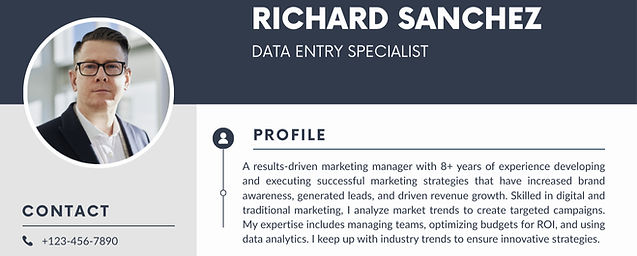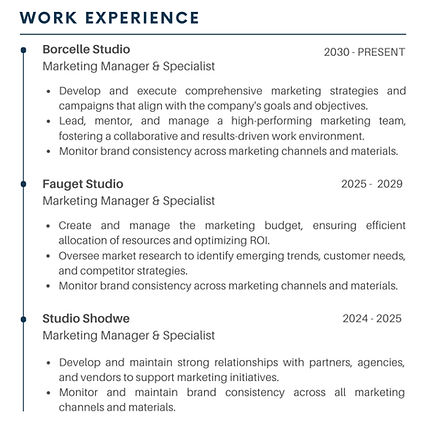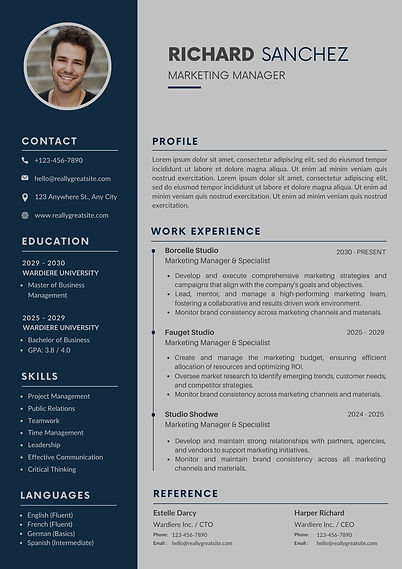top of page

EMPOWERING YOUNG MINDS

Resume Tips: Key Details for Success
Creating an effective resume is essential for making a strong impression on potential employers. The Resume Tips section provides valuable tips and key information to include, ensuring your resume stands out. From formatting and layout to highlighting relevant skills and experiences, these guidelines will help you craft a compelling document that showcases your qualifications and enhances your chances of landing your desired job.
Crafting The Perfect Resume
Creating the perfect resume is essential for leaving a lasting impression on prospective employers. Begin by prominently displaying your contact information at the top, making it easy for hiring managers to reach you. Next, provide a succinct summary that highlights your key skills and experiences, giving a snapshot of what you bring to the table. It's important to customize your resume for each job application; this means emphasizing relevant achievements and using strong action verbs to clearly demonstrate your contributions in previous roles. Additionally, take the time to thoroughly proofread your resume, ensuring it is free from any grammatical errors or typos, as this will help you present a polished and professional image to employers.
Resume/CV
Check Out Our Latest Blog Posts Here

What To Include In Your Resume/CV
Contact Details/Information
It is important to include your contact details to make it possible for Human Resource Managers and Recruiters to contact you for an interview.
Include the following:
-
Name and Surname
-
Your own Professional or Personal email address (not your current work address)
-
Contact number
-
A link to your LinkedIn profile. It is advisable to create a LinkedIn profile if you have not done so already.
Job Title
The "job title" section of a CV is where you list the formal title of your current or previous role. It should accurately reflect your responsibility and the level of seniority within an organization.
Examples of Job Titles include:
-
Administrative Assistant
-
Junior Accountant
-
Marketing manager
-
Sales Representative
-
Software Engineer
-
English Teacher
Profile
A profile on a resume is a brief statement or overview positioned at the top that summarizes the experience and skills you have to offer for the role that you are applying for.

When crafting a resume/CV profile, aim to encapsulate your experiences and goals in under 500 characters, whether in a paragraph or bullet points.
This section should highlight your skills and qualifications, providing the hiring manager with insight into how your strengths can add value to their organization.
Profiles typically incorporate information about accomplishments and achievements, often using percentages or statistical to illustrate the positive impact on the company.
For example:
-
"Motivated and ambitious student with a passion for [field] and a strong academic record, seeking internship opportunities to gain practical experience and further develop my skills."
-
"Recent graduate with a [degree] in [major] from [university], seeking an entry-level position to apply my academic knowledge and practical skills gained through internships."
-
"A highly skilled IT specialist with 6+ years of experience, including 3 years in the healthcare industry, seeking to enhance ROI for [company name] with proven network administration skills.
Work Experience
Your work experience section provides a summary of past job responsibilities and achievements, demonstrating your qualifications for the position you are applying for. This section should emphasize the roles you've held and the contributions you've made.
Make sure to create a separate section dedicated to your work experience, positioned after your contact information and resume summary, and select a suitable title for it.
Each entry should include the following:
-
Your job title
-
Company name and location
-
Employment dates (month and year of start and end date)
-
3–5 bullet points outlining your key accomplishments.


Start with your most recent work experience at the top of your Work Experience section, then list your previous roles in reverse-chronological order. Presenting your work experience in this way allows hiring managers to see your career progression and the development of your skills over time.
Dedicate time to craft focused bullet points that highlight specific skills and experiences relevant to the position you're applying for. Thoroughly examine the job posting to pinpoint key terms and qualifications, ensuring your resume aligns with the company's requirements.
Education
When taking a look at your education section, hiring managers usually look for a few essential details.
This includes:
-
The name of your educational institution
-
The location of the school
-
The degree you received (if applicable)
-
Your area of study
-
Your graduation year (if applicable)
-
Your GPA
-
Any relevant honors, academic achievements, coursework, activities, or recognitions earned during your studies

The education section of a resume is typically the shortest, often consisting of around 20-30 words. However, it is important to format this section to align with the specific requirements of the job for which you are applying.
For example, if you are a recent graduate, try to provide detailed information about your educational background and place this section in a prominent position on your resume, as this represents the bulk of your experience.
By tailoring the education section effectively, candidates can enhance their appeal to potential employers.
Expertise/Skills
Use the skills section on your resume to discuss your technical and workplace skills (sometimes called hard and soft skills). It helps to review a job description, noting the required and recommended skills, so you can list those that are applicable first. The Skills section of your Resume/CV provides a quick snapshot of your capabilities and demonstrates how well you match the job's requirements.
-
List skills directly related to the job description, such as proficiency in specific software, languages, or tools.
-
Be precise when listing technical skills, including specific software versions or techniques (e.g., "Excel (pivot tables, macros)" instead of just "Excel".
-
Mention any specialized knowledge or experience that is valuable in your field.
For example:
Teacher skills would include;
-
Subject Knowledge
-
Curriculum Planning
-
Computer Skills (Microsoft, Excel)
-
Language Skills
-
Communication Skills
-
Classroom Management
-
Leadership Skills
-
Emotional Intelligence
Mechanic skills would include;
-
Engine repair
-
Electrical Systems
-
Technical Aptitude
-
Vehicle Diagnostics
-
Problem-Solving Skills
-
Organizational Skills
-
Customer Service

Language Proficiency
The language section demonstrates your proficiency in languages beyond your native tongue. This aspect emphasizes your adaptability and capacity for international roles or interactions with a variety clients.

References
Resume/CV references are people whose contact information you give to recruiting professionals so that they can vouch for your character, skills, and work performance. Recruiters like to use your references to double-check what you've written on your CV, as many candidates actually lie on their applications
Stay Tuned
Coming Soon
bottom of page









